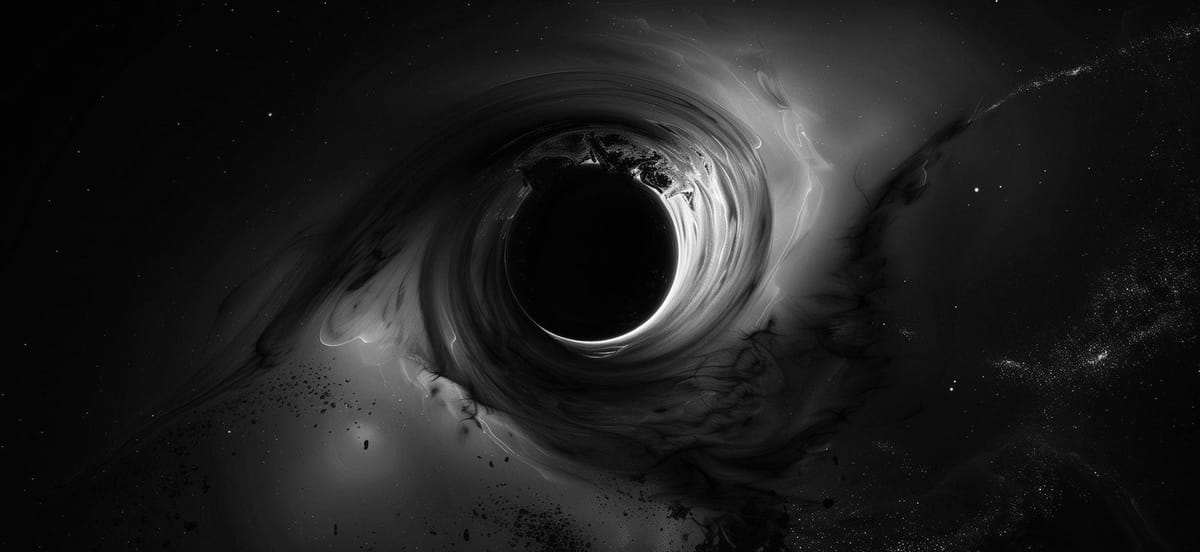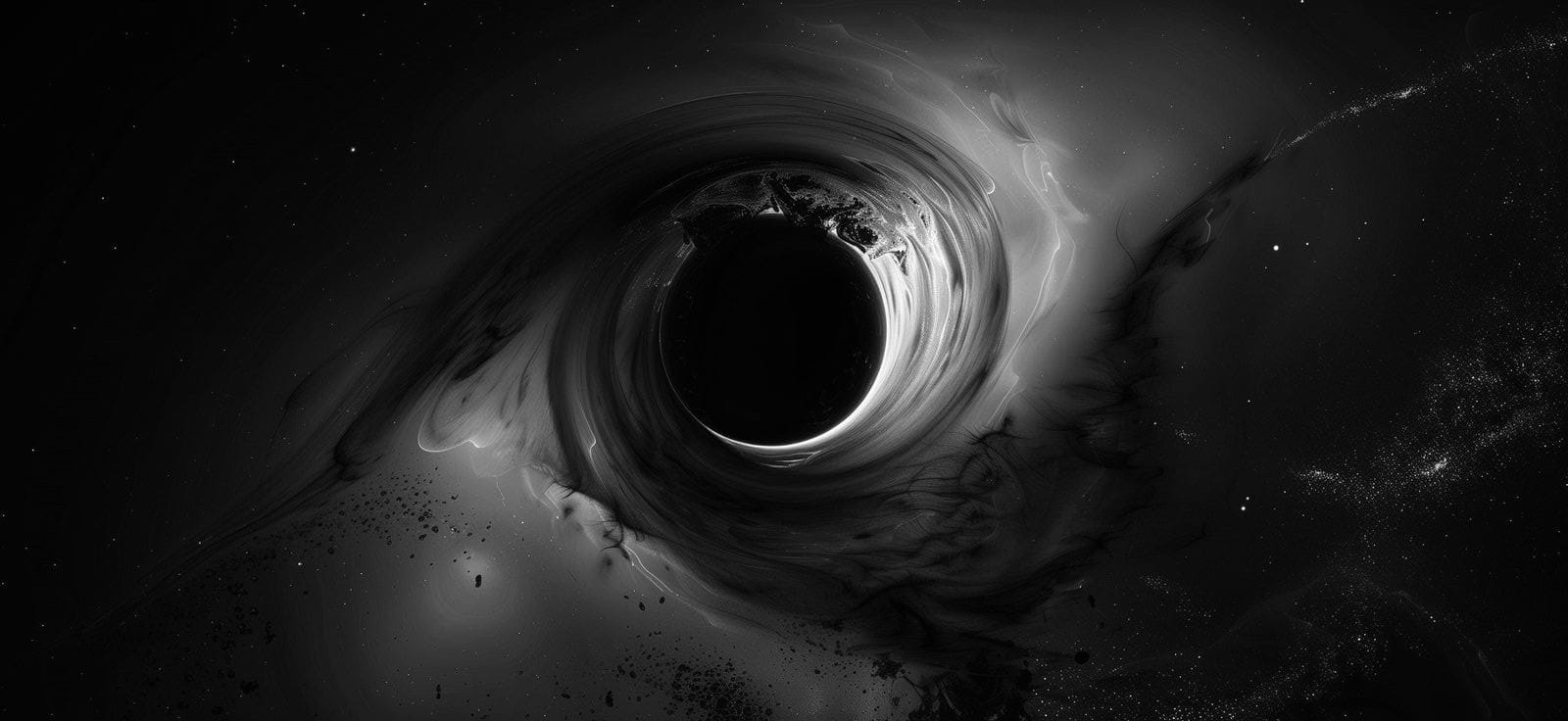Why science doesn't understand Black Holes

They say a black hole is a place where gravity becomes so strong that not even light can escape. Sounds cool—until you start thinking about it. And then, nothing makes sense anymore.
Let’s say you’re a curious kid. Or just a grown-up with your curiosity intact. You hear the usual explanation:
"A black hole is a region of spacetime where gravity is so strong that nothing—not even light—can escape. This happens when matter is compressed into a very small area, leading to a singularity surrounded by an event horizon."
Okay. But now your common sense wakes up and starts asking:
1. What do you mean “a region of spacetime”? Isn’t spacetime everywhere? What’s special about this region?
Good question. Most people imagine a black hole as a weird object sitting in space. But in modern physics, a black hole isn’t really an object—it’s a region defined by a specific condition: once you cross the event horizon, you can’t come back out. Not even light can.
But that raises the question:
Is this region made of something different? Is it another type of spacetime?
The answer you’ll often hear is something like:
“It’s what happens when spacetime is pushed to its limits.”
That sounds poetic—but what does it mean?
In physics, it means our equations start spitting out infinities: infinite curvature, infinite density, infinite tidal forces. And infinities in physics don’t describe reality—they describe a breakdown in the model. When scientists say “pushed to the limits,” what they mean is:
“Our math stops working here. We’ve reached a place where we don’t know what’s going on.”
In that sense, a black hole is less of a physical thing and more of a question mark—a location in the universe where our current theories fail us.
2. If gravity is caused by mass curving spacetime, and a black hole is just a region, then what’s causing the gravity?
You’ve been taught that gravity exists between two masses. If you throw an apple, Earth pulls it down. That makes sense.
But Einstein’s theory of general relativity goes deeper. It says: gravity isn’t a force between objects. It’s the curvature of spacetime caused by mass and energy.
Okay—but now you say a black hole is a “region.” So is the black hole itself the mass? Or is the mass hidden inside? Or... is there still any “mass” at all?
Physicists say the mass is still there—just collapsed into an infinitely dense point (the singularity). And that mass still curves spacetime, just like a star does. In fact, if our Sun suddenly turned into a black hole (same mass, but compressed), Earth’s orbit wouldn’t change. From a distance, gravity would feel exactly the same.
But that explanation leads us straight into another question...
3. What exactly is this “tiny volume” we’ve compressed the mass into? Is it matter? Is it space? What is it made of?
This is where things get murky.
You’re told that black holes form when massive stars collapse under their own gravity—so much so that all their mass gets squeezed into a “tiny volume.” But what does that mean?
- Is that volume made of particles like protons and neutrons?
- Is it empty space?
- Is it some new state of matter?
The truth? We don’t know.
The “singularity” is not a physical description. It’s a placeholder—a way of saying:
“The equations stop here. We don’t know what’s inside.”
Maybe it’s an infinitely small point. Maybe it’s a compressed quantum foam. Maybe it’s not even inside the black hole at all—some physicists suggest the mass is holographically encoded on the event horizon, not in the center.
Either way, the phrase “tiny volume” is misleading. It pretends we know more than we do. We’re not describing something we’ve seen—we’re extrapolating blindly into a region where our tools break.
4. But wait—don’t particles resist compression? What about Pauli’s Exclusion Principle?
Yes! Under normal conditions, matter pushes back. That’s why white dwarfs and neutron stars exist—they’re held up by quantum pressure. The Pauli exclusion principle says two fermions (like neutrons) can’t occupy the same quantum state in the same space. That’s real physics.
So what happens at the edge of a black hole?
Scientists will tell you:
“Eventually, gravity becomes stronger than this resistance. Gravity wins.”
But hold on a second.
If gravity is just spacetime curvature caused by mass, and there’s no space left to curve—because matter has collapsed into a point—then how is gravity still “winning”? What space is it curving? What force is it exerting? Are we back to talking about gravity like Newton did, as some invisible hand between two masses?
This is where modern physics starts to flip-flop between frameworks:
- On one hand, it uses general relativity’s spacetime curvature.
- On the other, it uses Newtonian language like “gravity wins” and “resistance fails.”
In reality, both of those frameworks break down at this scale. The conditions inside a collapsing black hole are beyond both general relativity and quantum mechanics. We are using mathematical language that doesn't apply to the reality we're trying to describe.
So... what is a black hole, really?
Not a thing. Not a hole. Not even fully understood.
A black hole is a kind of cosmic warning sign. It marks the place where our most trusted physical theories collapse. It’s not just mysterious—it’s illegal within our current understanding. It’s the universe showing us a gap in our knowledge—and daring us to close it.
We may talk about event horizons, singularities, and infinite density, but at the heart of it, here’s the truth:
We don’t know what a black hole is.
We only know what our math tells us right before it breaks.
And maybe that’s the most honest answer science can give right now.
Interested in where we go from here?
Some physicists are trying to unify quantum mechanics and gravity. Some suggest information escapes black holes. Some think black holes don't even exist in the way we imagine them. The deeper you go, the less certain things become—and maybe that’s the real thrill of it.
Because black holes aren’t just regions in the sky.
They’re mirrors—reflecting back the limits of what we think we know.
Black holes aren't the only thing wrong with modern science, there's a ton more, head to suggested reading to learn more
